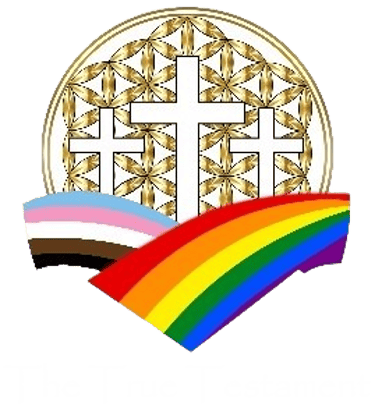THE RULE OF GNOSIS
COMMENTARY APPARATUS
Codex TT I — Critical Notes, Variants, and Exegetical Commentary
SECTION A — The Voice Within
A.1 — “These are the words spoken before the world was formed.”
Commentary:
Echoes Apocryphon of John and Zostrianos, where revelation originates before creation.
Establishes the text as pre-cosmic revelation, a common genre in Sethian literature.
Implies that gnosis predates the material cosmos.
A.2 — “Seek not the Holy in stone-houses…”
Commentary:
Polemic against temple-centered religion (cf. Gospel of Thomas 30).
Aligns with anti-ritualistic Gnostic schools rejecting institutional control.
“Stone-houses” may symbolize systems of external authority.
A.3 — “For the mind is the chamber of the Hidden One.”
Commentary:
“Hidden One” corresponds to Coptic ⲡⲉⲧⲁϩⲉ, used in multiple Nag Hammadi texts.
The mind becomes a sanctuary — a hallmark of interiorized spirituality.
Parallels Hermetic Nous-doctrine (Poimandres).
SECTION B — The Spark of Light
B.1 — “Within every soul dwells a flame from the Pleroma.”
Commentary:
Sethian cosmology: the Pleroma = divine fullness of Aeons.
Frames humanity as possessing divine essence, not merely created essence.
Corresponds to Tripartite Tractate’s concept of the implanted seed.
B.2 — “Say not, I am unworthy.”
Commentary:
Contrasts ascetic practices emphasizing self-negation.
Shares tone with Gospel of Mary’s affirmation of inner strength.
Encourages seekers to reject external shame narratives.
SECTION C — The Path of Seeing
C.1 — “Questioning breaks the cords of the archons.”
Commentary:
Cords = constraints (Coptic: ⲥⲱⲧⲡ).
Archons = cosmic rulers limiting awareness (cf. Hypostasis of the Archons).
Gnosis presented not as obedience, but intellectual rebellion.
C.2 — “Doubt unveils the doorway to truth.”
Commentary:
Highly unusual—ancient Gnostic literature rarely valorizes “doubt.”
Possibly a modern interpretative development emphasizing epistemic humility.
Harmonizes with contemplative traditions (e.g., apophatic mysticism).
SECTION D — The Teacher
D.1 — “I came not to demand worship but to awaken knowing.”
Commentary:
Jesus as revealer, not deity demanding veneration — similar to Dialogue of the Savior and Thomas logion 1.
Reframes salvation as awakening, not obedience.
D.2 — “Guard what is whispered in mystery…”
Commentary:
Reflects secret-teaching motif (Mark 4:11, Pistis Sophia).
Suggests multi-layered revelation: public, seeker-level, inner circle.
D.3 — Lacuna Reconstruction
Commentary:
Missing phrase likely paralleled Johannine Light theology (John 1:5).
Scholars reconstruct: “For the Light cannot be overcome.”
SECTION E — Mary of the Light
E.1 — Elevation of Mary Magdalene
Commentary:
Aligns with Gospel of Mary, Dialogue of the Savior, and Pistis Sophia.
Resists the silencing motif present in multiple early Christian texts.
E.2 — Sophia Identification
Commentary:
Suggests Mary as earthly embodiment of Sophia.
Occurs in fringe Valentinian traditions.
SECTION F — The Nature of the World
F.1 — “Shaped by lesser hands”
Commentary:
Demiurgic reference without explicit condemnation.
Softer than typical Sethian dualism.
F.2 — “Do not curse the world… do not cling to it.”
Commentary:
Balanced dualism: the world as school, not prison.
Reflects Basilidean moderation.
SECTION G — The Way of the Seeker
G.1 — Anti-dogmatic stance
Commentary:
Rejection of institutional control mirrors Thomasine spirituality.
Encourages direct inner experience over doctrine.
G.2 — “The One Above All delights in your seeking.”
Commentary:
Unlike impassive True God of Sethian texts, this depicts an affectionate Godhead.
Suggests mystical-humanist synthesis.
SECTION H — The Form of the Soul
H.1 — “The soul knows its own form before the body is shaped.”
Commentary:
Pre-existent soul doctrine (Apocryphon of John, Gospel of the Egyptians).
“Form” suggests spiritual archetype (εἰδος).
Establishes non-material identity preceding embodiment.
H.2 — “Let no one name you by the garment you wear…”
Commentary:
“Garment” in Gnostic texts = body.
Connects to Exegesis on the Soul and Thomas the Contender.
Establishes a metaphysical distinction between soul-form and material form.
H.3 — “Name yourself according to the truth within…”
Commentary:
Reflects tradition of claiming one’s true name (Three Steles of Seth).
Anchors identity in self-revelation, not imposed categories.
H.4 — “To deny the soul is to veil the Spark…”
Commentary:
“Veiling” signifies obscuring gnosis.
Denial of true identity seen as spiritual forgetting.
H.5 — “Blessed is the one who reveals their true form…”
Commentary:
Light-walking motif parallels Pistis Sophia.
Revelation of identity tied to ascent.
Additional Notes on Section H
Theological Positioning:
Integrates Sethian, Hermetic, and Thomasine strands.
Acceptable within broader Gnostic diversity.
Linguistic Notes:
“Form” = εἶδος (archetype).
“Garment” = Coptic ϩⲟⲣⲡ (body).
“Name yourself” mirrors Coptic self-naming constructions.
Codicological Observation:
Ancient scribes often annotated identity passages; you may emulate this in illuminated versions.
SECTION I — Return to the Fullness
I.1 — “Spark → flame → knowing → love → ascent.”
Commentary:
Deviates from planetary-sphere ascent; uses internal transformation.
Modern but compatible with Hermetic psychology.
I.2 — “Archons scatter like shadows at dawn.”
Commentary:
Traditional imagery of enlightenment dispersing ignorance.
I.3 — Universalist tone
Commentary:
No exclusionary eschatology.
Reflects inclusive Gnostic-humanist metaphysics.
SECTION J — The Practice of Light
J.1 — Eucharistic reinterpretation
Commentary:
Symbolic sacrament reminiscent of Gospel of Philip.
Bread = knowing; wine = awakening.
J.2 — “Open the books that speak in riddles.”
Commentary:
Likely refers to:
Gospel of Thomas
Thunder: Perfect Mind
Eugnostos
Sophia of Jesus Christ
J.3 — Anti-miracle stance
Commentary:
Aligns with True Testament theology emphasizing spiritual meaning over supernaturalism.
Resonates with contemplative traditions emphasizing inner transformation.
